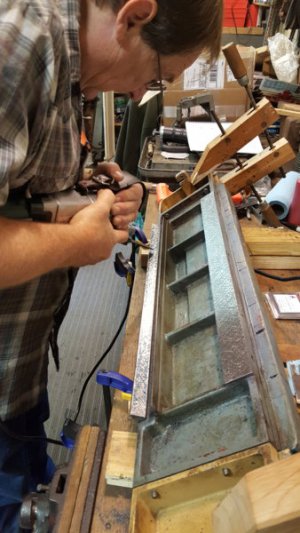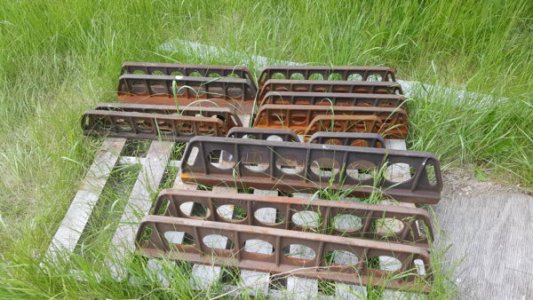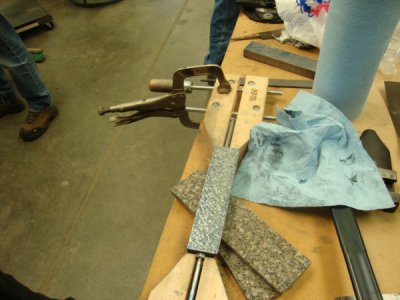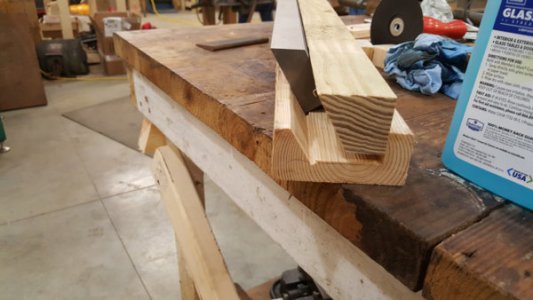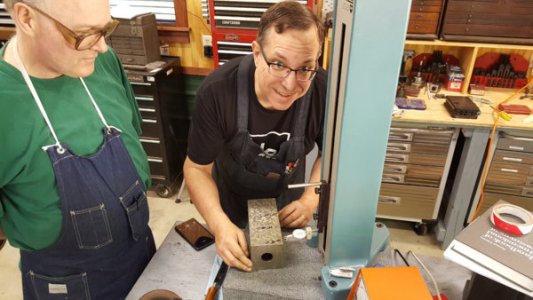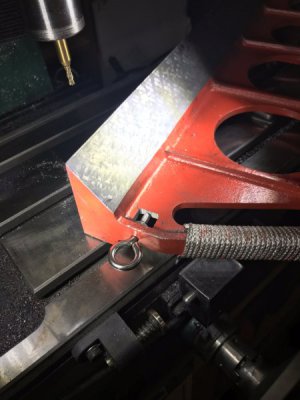- Joined
- Apr 21, 2015
- Messages
- 653
Putting an eyebolt into the end of my 36” camelback won’t be nearly as interesting a thread as Will scraping in his 6’ monster, but I’ll be sure to take a couple pictures when I do.
I’ve got to build some sort of wooden saddle or clamp out of scraps first to hold it while scraping, especially the dovetails. I just need something to hold it canted at 45deg while I scrape the dovetail.
I’m thinking of basically just a couple of wooden vee blocks (milled out of a two by four) clamped to a bench. I’m pretty tall, but I still might need to stand on a platform while scraping with it that high up. If you’ve got any suggestions, I’m all ears.
Will, Richard’s comment #19 above looks to have answered your original question completely (yup, it’s doable). Now it’s on you to take a bunch of pictures and document your progress to entertain the rest of us! Really looking forward to seeing how it goes.
You’re leading a purer life than me, by the way, if five foot lengths of precision granite are falling into your lap. (Laugh)
I’ve got to build some sort of wooden saddle or clamp out of scraps first to hold it while scraping, especially the dovetails. I just need something to hold it canted at 45deg while I scrape the dovetail.
I’m thinking of basically just a couple of wooden vee blocks (milled out of a two by four) clamped to a bench. I’m pretty tall, but I still might need to stand on a platform while scraping with it that high up. If you’ve got any suggestions, I’m all ears.
Will, Richard’s comment #19 above looks to have answered your original question completely (yup, it’s doable). Now it’s on you to take a bunch of pictures and document your progress to entertain the rest of us! Really looking forward to seeing how it goes.
You’re leading a purer life than me, by the way, if five foot lengths of precision granite are falling into your lap. (Laugh)

